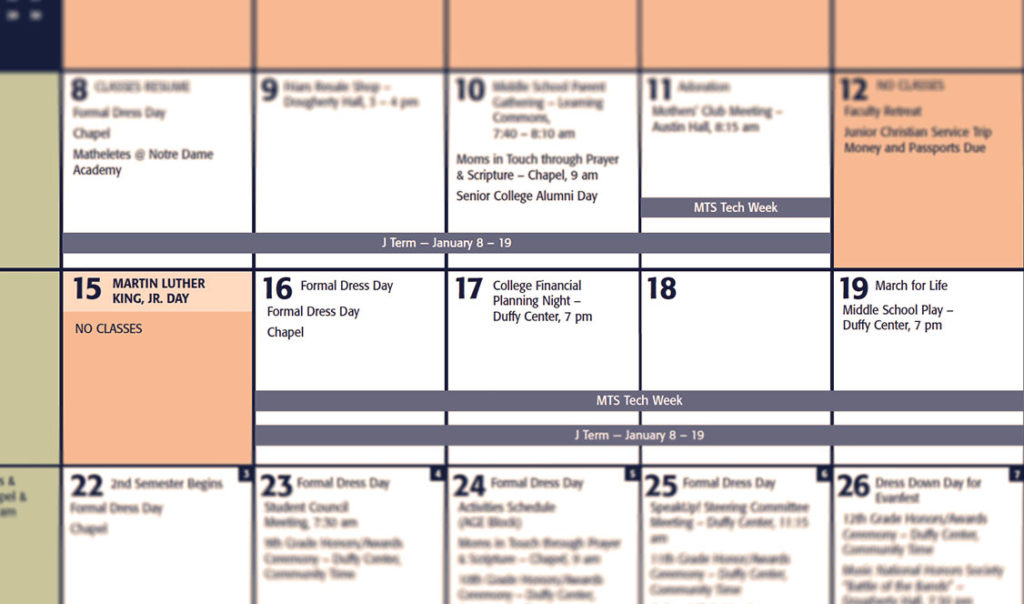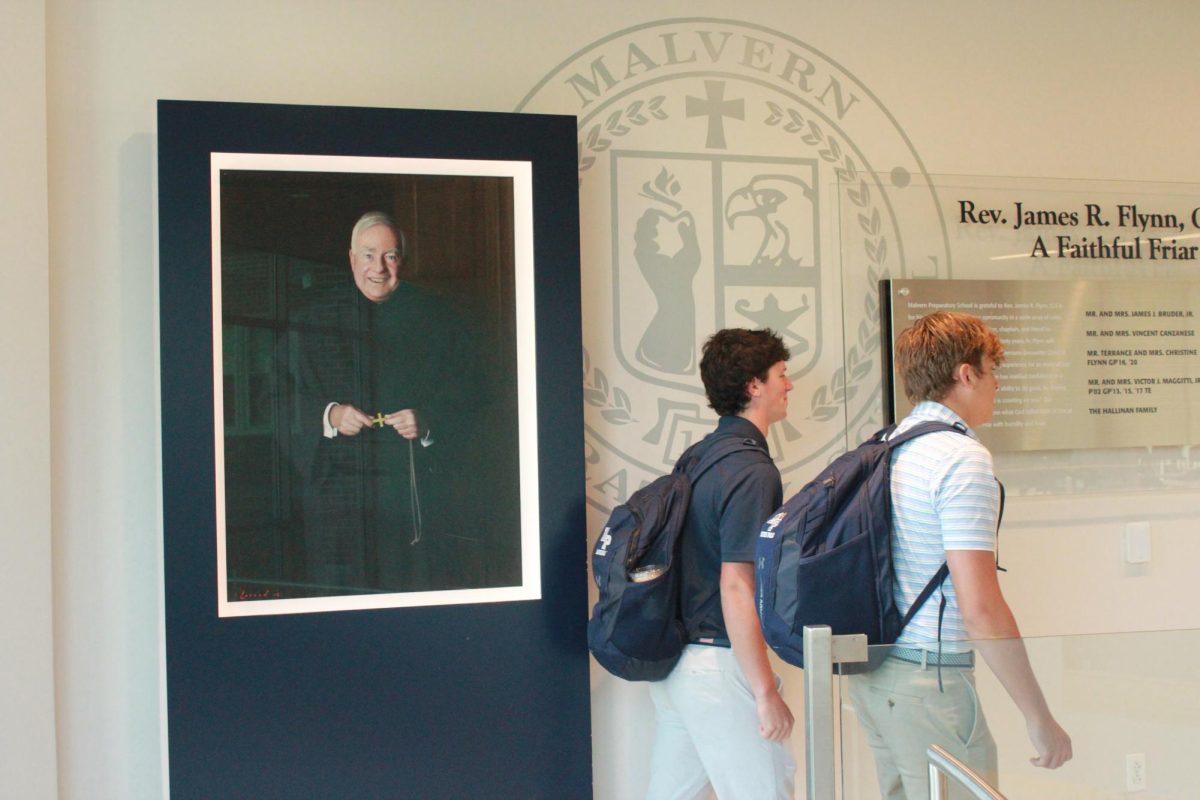After five years of planning, the J-Term is nearing.
On November 14, a course catalog and schedule for J-Term was released to the students of Malvern Prep via email.
According to the catalog, students will have access to a maximum of two J-Term courses over the 8-day session, stretching from January 8-19 over two four-day weeks.
For each day of J-Term, students report to homeroom at 8:15 as usual, while the first class of the day begins at 9 a.m. Students will take two 2-hour classes daily, beginning at 9 a.m. and 1 p.m., with lunch and “grade-level experiences” scheduled between 11 a.m. and 1 p.m., according to the catalog.
This catalog includes over 35 classes, which are each taught by one or two teachers. Among these classes are “Lifeguard Certification,” “Don’t Be Afraid of Death,” and “Culture and Cooking.”

“I like [the course catalog]. I like the spectrum of types of classes. I know there’s one about leadership from Mr. Algeo and then there’s all the way to courses about music and the history of music, which I think is really cool,” sophomore Charlie Sayers said.
However, the J-Term experience will be significantly different for students who are taking Advanced Placement classes, who will continue their AP courses during the eight days of J-Term.
According to Assistant Head of School for Academic Mr. Patrick Sillup, the biggest difference between an AP student’s J-Term and a non-AP student’s J-Term is this change in coursework.
“An AP student is extending their interaction with the coursework they’re already doing, [In] J-Term you’re coming in and interacting with something completely different,” Sillup said.
However, the differences between the J-Term experience for students based on whether or not they are taking AP classes doesn’t stop there. Their schedules also are different, as some students take more than two AP students classes and therefore need access to more than two class options during the J-Term.
“You’re able to take [all of your AP classes]. The AP schedule looks different than the J-Term schedule. What [Registrar Mr. Mike Koenig] was able to do was block thing out where guys can have this exposure and experience with the content, but then also create this hub effect in the LC so if you’re not in the APs you have access to these teachers,” Sillup said.
During J-Term there is one morning block and one afternoon block. Students with two AP classes will have one class in the morning and one in the afternoon, but students with more than two AP’s will have to utilize the Learning Commons as a hub to communicate with their teachers.
“For them we had to build something that’s even more unique, which is ‘How are you going to navigate your schedule knowing that two [classes] would run at the same time?’” Sillup said. “So connecting with your teachers, saying which one you’re going to today, which one tomorrow [is important].”
However, some AP students feel they need more clarification when it comes to their schedules.
“[The schedule] confuses me. I’m in AP Bio so I’m not sure if I have my class one day and then don’t have it the next, or if I have it in the morning and don’t have it in the afternoon,” sophomore Colin Dougherty said.
Others are disappointed that they will not get to select from the J-Term catalog options. Junior Claudio Chieffo takes two AP classes, so he won’t be able to take a class from the catalog.
“I wish [J-Term] was here freshman and sophomore year,” Chieffo said. “It’s kind of a bummer that I won’t get to take one [catalog class], but I understand that it’s more important to get college credits and do well in the classes you already have.”
Chieffo sees some advantages to the longer AP classes during J-Term. “I think it is a good way for AP classes to get caught up because the amount of days we lose because we have a different schedule than a public school puts us at a disadvantage with AP courses,” he said.
Although there are differences between an AP student’s J-Term and a non-AP student’s J-Term, Koenig and Sillup have been working to design the program to run smoothly despite these differences.
“The old format was that the end of the semester was at January 17, and everyone would come back from Christmas break and hurry up to finish their semester courses,” Koenig said. “That time in January was a decent time to put that in there because we found that it’s two four day weeks.
Koenig sees J-Term as a break from what students might be doing for the entire rest of the year, and an opportunity to take a class that might be interesting.
“[J-Term can be] a two week period after we come back from break which we learn different types of classes, or we give our AP teachers a different format of class time,” Koenig said. “The idea is it is going to work for the AP students and for the non-AP students.”







